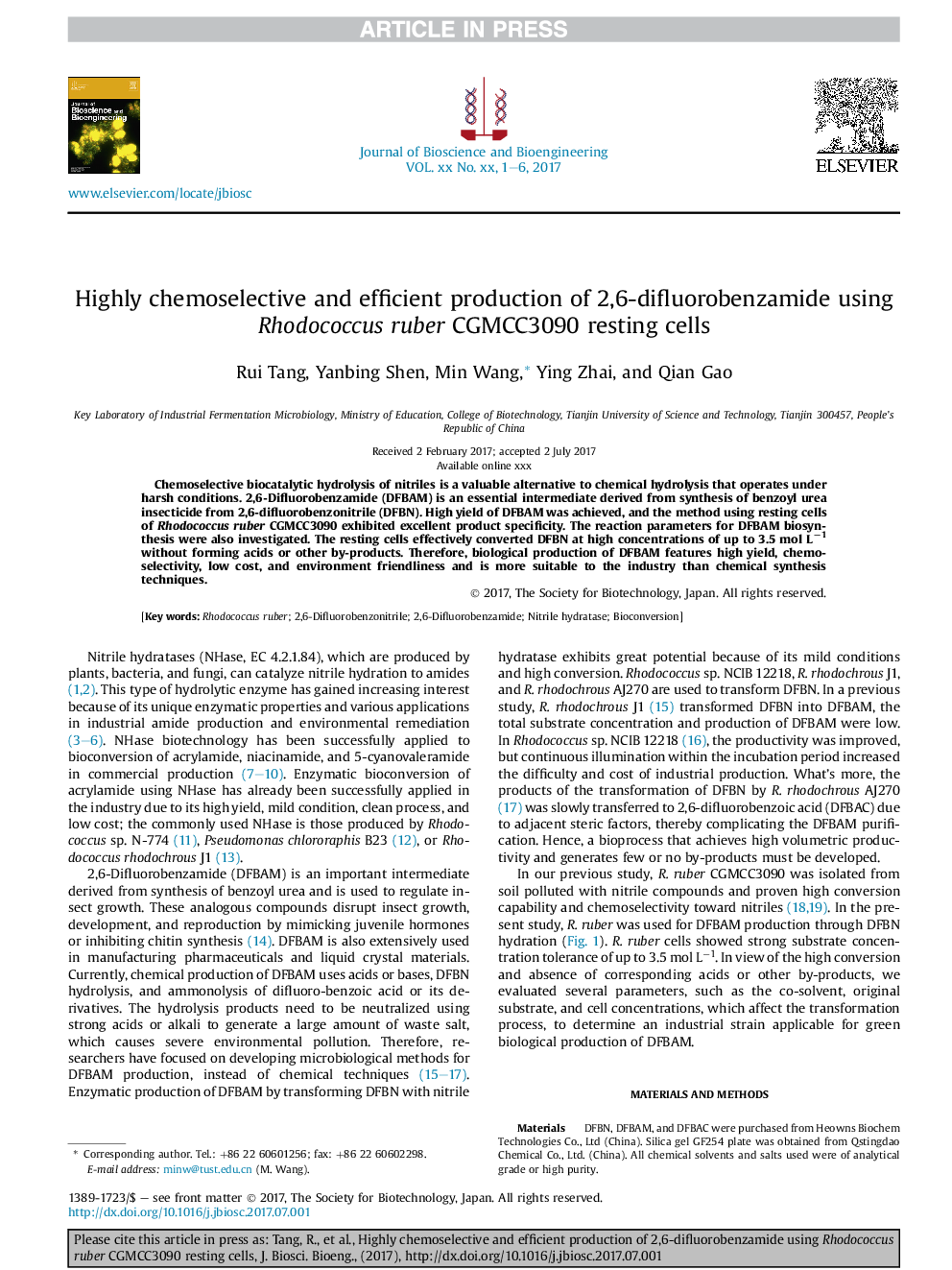| Article ID | Journal | Published Year | Pages | File Type |
|---|---|---|---|---|
| 6490064 | Journal of Bioscience and Bioengineering | 2017 | 6 Pages |
Abstract
Chemoselective biocatalytic hydrolysis of nitriles is a valuable alternative to chemical hydrolysis that operates under harsh conditions. 2,6-Difluorobenzamide (DFBAM) is an essential intermediate derived from synthesis of benzoyl urea insecticide from 2,6-difluorobenzonitrile (DFBN). High yield of DFBAM was achieved, and the method using resting cells of Rhodococcus ruber CGMCC3090 exhibited excellent product specificity. The reaction parameters for DFBAM biosynthesis were also investigated. The resting cells effectively converted DFBN at high concentrations of up to 3.5 mol Lâ1 without forming acids or other by-products. Therefore, biological production of DFBAM features high yield, chemoselectivity, low cost, and environment friendliness and is more suitable to the industry than chemical synthesis techniques.
Related Topics
Physical Sciences and Engineering
Chemical Engineering
Bioengineering
Authors
Rui Tang, Yanbing Shen, Min Wang, Ying Zhai, Qian Gao,
